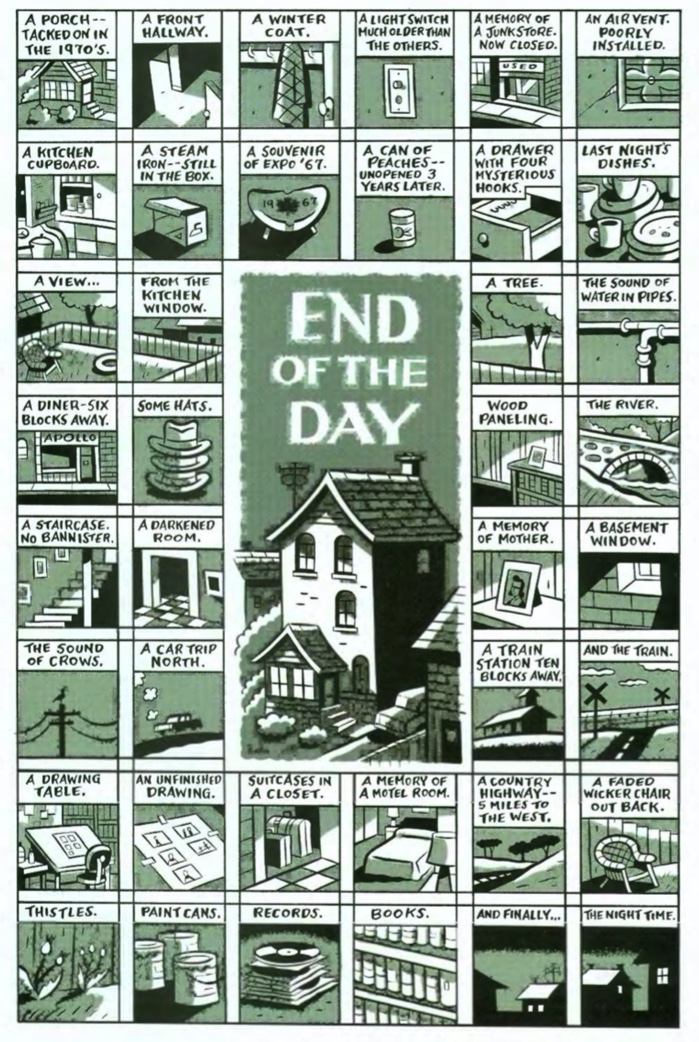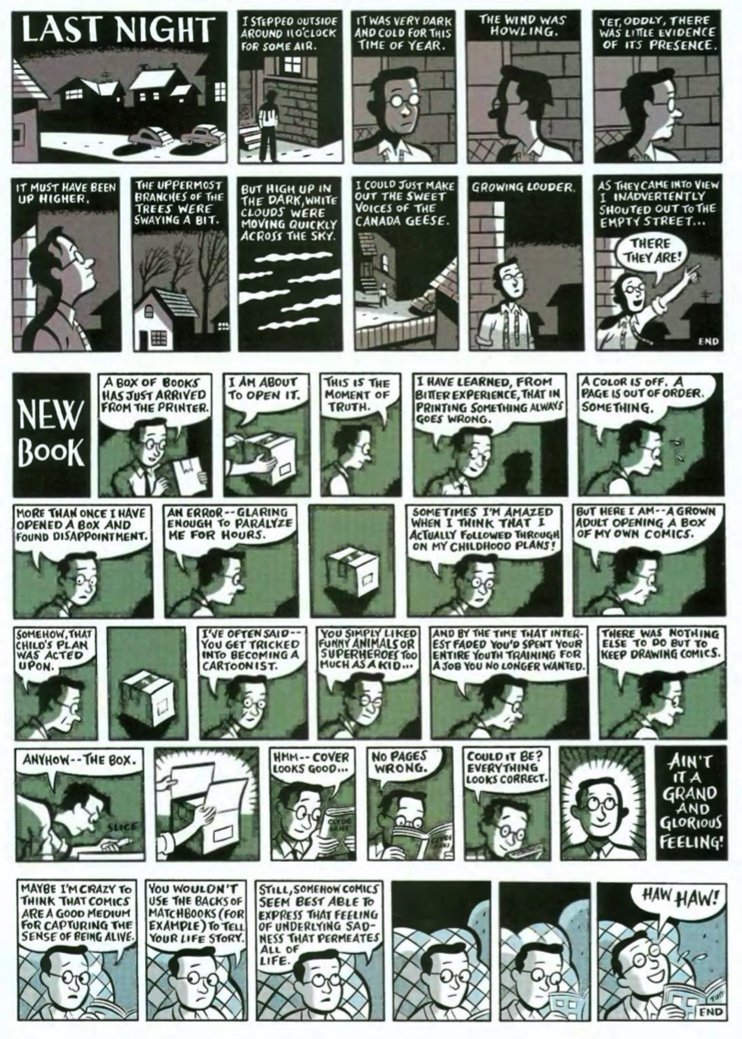Little Nemo In Slumberland (1905-1911, 1914, 1924-1927) by Winsor McCay
REVIEW BY RICH KREINER:
Ancient culture, uncovering impressive remains of still more ancient cultures, often attributed to their predecessors a superhuman stature. Finding the great walls and gates made of stone blocks they no longer possessed the technology to move, descendants presumed ancestors to be a race of giants or cyclops whose achievements were inconceivable through merely human means.
Little Nemo In Slumberland appears to us today as an expansive, extravagant, and glorious monument to imaginative vision and artistic mastery. For all the strip's direct and accessible beauty, for all its immediate appeal, it seems faintly exotic, the product of some preternatural insight and ability. It practically dares us to consider it as the work of mortal hands - let alone a single pair - in a commercial industry. Who thought up these wonderful things? How could they have possibly have been committed to paper, Sunday after Sunday?
How do we explain the intuitive ingenuity, the calculated riot of the strip's evolving excitement? Where is the precedent for such lush and dazzling mass-produced fantasies? Who had the trained and prolonged concentration sufficient to exactingly portray the wild variety of objects and scenes... or the audacity to indelibly entwine the most mundane and the most utterly preposterous? How can we count for the sheer output of images? What about the degree of detail rendered, the magnificent colouration, the adeptness of line, the thrilling ornamentation, the design elements both subtle and flamboyant, the grand architectural settings, the fluid experiments in perspective and animation, the sustained visual fireworks? Today, to us, the care, scope, bravado, and devotion displayed in Little Nemo seem the hallmarks of a lost era.
However gifted, Winsor McCay can be seen as human as the rest of us, thanks in part to the valuable Canemaker biography. McCay was a pioneer in animated cartooning and enjoyed success in a stage act that featured his drawing skills. He originated a number of strips, such as Little Sammy Sneeze and Hungry Henrietta, with strong formulaic and thematic hooks. Another Dreams of the Rarebit Fiend feature spectacularly conceived and rendered nightmares that invariably end with awakening.
While precursors, these earlier strips could hardly have prepared readers for the untethered wonder and grand scale of Little Nemo. Here McCay's ambition, training, natural talent and love of drawing coalesced in the full-page colour funnies feature that unfurled from 1905 to 1911 (with a reincarnation as In The Land Of Wonderful Dreams extending through 1914 and a revival from 1924 to 1927). His earlier employment - as caricaturist, editorial cartoonist, illustrator, graphic reporter, and poster maker for the circus and dime museums - was surely instrumental in the punctual forays into a world built upon pageantry, splendour and marvel. McCay's lack of formal artistic training may have additionally contributed the notion that nothing was unthinkable in the furtherance of expression.
Certain images and sequences from Little Nemo, appropriated by all manner of art and commerce, have gained a life of their own during later, hungrier cultures. Once glimpsed, especially at a tender age, fragments become unforgettable - the galloping bed, the roller-coaster stairway bannister, the house gobbling turkey, the dragon carriage, the plausible chaos of Befuddle Hall.
Thanks to the Fantagraphics' luxurious (yet still undersized) reprint series, we can now see just how astonishing McCay's entire run was. Pick a month of instalments, any month, (though earlier would likely more thoroughly amaze than later). September, 1908? It begins with a runaway locomotive, plowing through streets, buildings and forests. Next week it's a carousel whose animals come to life in their circle chase only to end in the menageries' chain reaction collision; this is followed by a home hooked by a ship's anchor, hoisted high, and dropped to earth; then the floor beneath and the background behind the characters undergo a series of mechanical transformational shifts as if they were part of child's puzzle. October begins with Nemo's bath becoming a pond, then a swamp infested with wildlife, and finally open water where he dodges the prows and wakes of ocean-going ships only to reach an ice-flow where he's chased by a polar bear. I could go on and on, because McCay went on and on.
One doesn't so much read these strip as drink them in. With all there is to see in each panel of Slumberland, the proper pacing for the strip might well approach one episode per week. Taken too quickly, Little Nemo can prove to be an exhausting read with its incomparable deluge of wonders (to say nothing of those unaccountably crammed word balloons and the thoroughly pedestrian dialogue) Even a glance at one of its timeless pages suggests it remains a strip to ogle and, perhaps, to inform our own dreams.
REVIEW BY ART SPIEGELMAN:
(from Comics For The Holidays, The Comics Journal #270, November 2006)
...for those of us who care to give the very best, there's
Winsor McCay's Little Nemo In Slumberland: So Many Splendid Sundays (
Sunday Press, $120). Yeah It's pricey, but the work is priceless, and the book is actually not overpriced. The production is impeccable. Collecting the best pages from the best period (1905-1910) of the most visually and structurally ravishing strip ever made, this 16x21-inch, 120-page bundle of joy weighs in at about 10 pounds and is probably the biggest object you can place under a Christmas tree short of plunking the tree down on top of a new Porsche. I'm embarrassed to be gushing - it's not in my nature - but this is one of the few books I could not resist providing a blurb for in the past few years. (Despite repeated injunctions from my agent that I shouldn't since it breeds exponentially more blurb requests. Every blurb is a long haiku that takes too much time away from other forms of procrastination.) Anyway, my endorsement read:
This book's a dream. A slumbering giant has stirred and walks among us - its that hot new artist, Winsor McCay. You literally can't imagine what loving production and full broadsheet-sized scale have wrought! A testimonial (please don't confuse this with "hype"): I have every book of Winsor McCay's Little Nemo ever published. I even have a few actual Sunday Pages, but I tell you, it's as if I'd never seen Nemo before! Certainly never read it. (The "writing" in Nemo, even the lettering has been underestimated - it was always hard to squint and absorb it even in so-called "one-sized" reproductions.) Perhaps you THINK you know Nemo - that its easy to extrapolate from what you've seen and go "Uh-huh. I get it. It's bigger." Uh-huh. You DON'T get it - but if towering aesthetic achievement interests you at all, you gotta get it! I mean, it's as if somebody showed you a table-top model of the Chrysler building and said, "It's just like that, only bigger." Or if you saw a refrigerator magnet reproduction of a Van Gogh painting and figured you've seen Van Gogh... I dunno, for an artist as concerned with shifts in scale and meticulous attention to detail as McCay was, this heartbreakingly beautiful book is the reinvention of Winsor McCay - as if he was being published for the first time. Only better.
FURTHER READING:













